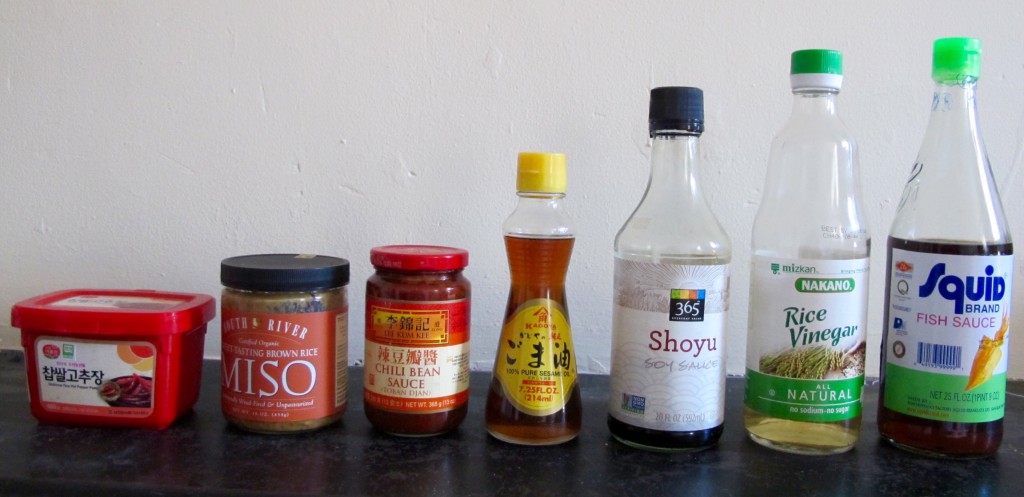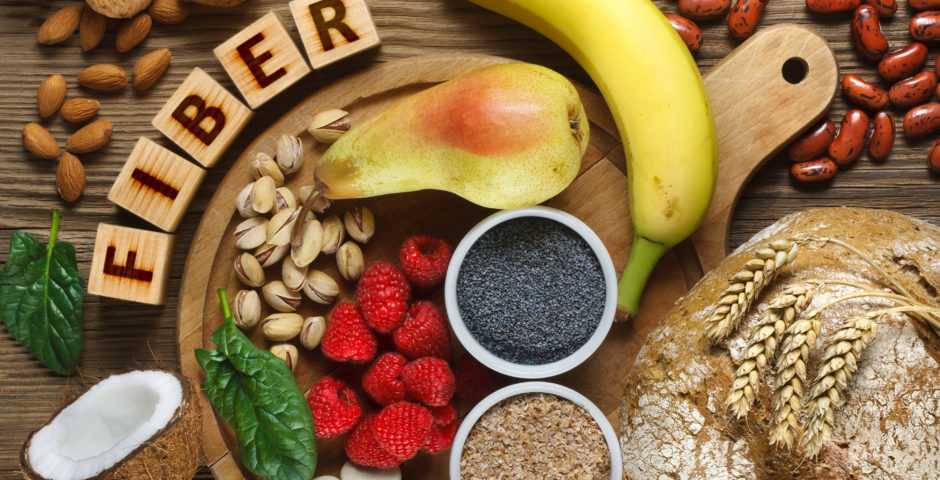
Top 10 Things from an Asian Supermarket
Our Food Editor Christine takes us through the best things to get at an Asian supermarket. If this is all new to you, you’ll be surprised at how many of these items are things you recognize from your favorite Asian restaurant. Very simple ingredients can make a very tasty and healthy dish. Read on!
10 Things to Pick Up at an Asian Supermarket
If you’ve ever wandered the aisles of a supermarket where the shelves are lined with things you‘ve never seen and where the labels look more like foreign art prints than a can of Campbell’s and wondered what exactly to do with the jars and bottles lining the shelves, I’m here for you. Since one of my very favorite things to do is to grocery shop in a second language, I’ve put together a list of some of my favorite pantry staples to buy at my local Chinese, Korean and Japanese grocery stores.
Most of the condiments I’m going to tell you about are fermented. While a lot of people eat fermented or cultured foods for their nutritional value, I’m in it for the flavor! Like wine, well-made fermented foods develop a depth and complexity with time that can’t be duplicated.
The flavors of fermented foods like these are also important for creating a satisfying flavor palette for people whose diets are mostly plant-based. Most fruits and vegetables turn sweet when cooked because of their natural flavors, and adding the rich savoriness of high-quality soy sauce or Korean gochujjang (sometimes spelled gochujang) creates a balance that satisfies in a way that people may miss who are not eating a lot of meat.
So if you have a Ranch 99, H-mart, Mitsuwa or independent Asian market nearby, give some of these delicious foods a try! And expect a bit of funk.
Gochujjang: Gochujang is a thick, deep red Korean pepper paste made with chilis, rice, fermented soybeans and salt. It has a rich, complex flavor that balances sweet, savory and just a little kick of heat. I put a spoonful of it in when I’m creating a base for chili or beef stew. It makes a delicious cold sauce for noodles in the summer and you can’t make Korea’s signature rice bowl, adaptable and delicious bibimbap, without it.
Doubanjiang, or Sichuan broad bean paste: This is similar to gochujang, but the base is fava or broad beans instead of soybeans. The chili peppers give it a unique, intense, spicy flavor. If you like sriracha hot sauce, you’ll find a lot of ways to work this into your cooking repertoire. I like it soaked into slurpy-spicy cellophane noodles with shiitake mushrooms and some quick-pickled cucumbers!
Dried shiitake mushrooms: These are sometimes called black mushrooms. Earthy and intense, they impart a meaty flavor to any dish. I rehydrate the mushrooms with hot water; after they have soaked for about 20 minutes, I strain and save the soaking liquid to use as stock, then stem and slice the mushrooms for risotto or fried rice. I add them to sautéed fresh mushrooms for a flavor boost. Rehydrated and chopped, they’re also great in scrambled eggs, or in a savory oatmeal with seaweed and miso. Dried shiitake (and dried porcini mushrooms) is truly one of my “desert island” pantry staples!
Bean thread noodles, or cellophane noodles: No cooking necessary! These transparent noodles only need to be soaked in warm water. They soak up whatever sauce you choose, whether a fiery Sichuan preparation with shiitakes to warm you up in the winter, or a cool sesame oil-slicked dish in hot weather. Fast and fun!
Buckwheat noodles: Buckwheat, or soba, noodles are a mainstay of my pantry in the summertime. Cooked and then chilled, they are the basis of chilled summer meals, from crunchy soba salad, to cold, brothy noodle bowls. Buy noodles that contain a higher percentage of buckwheat for a flavorful but lower calorie option.
Miso paste: I keep a jar of miso sauce that I make with miso paste, ginger, garlic, apple, soy sauce and sweet mirin (rice wine) in my fridge all the time. A tablespoon in the bottom of a bowl of broth, and you have a rich, satisfying and flavorful soup base. Add noodles, vegetables, a soft cooked egg, and you have one of my favorite comfort foods. But miso paste isn’t just for soup. Soften up the paste with a little warm water and toss your steamed vegetables with the miso and a dab of butter for a delicious and simple sauce.
Fermented soy sauce: So, there is soy sauce and there is soy sauce. Traditional soy sauce is made by fermenting soy beans (and often wheat) in a brine, the same technique used to make sauerkraut or deli pickles. It is aged, strained and bottled, much like wine vinegars or whisky, and the flavor and price is often commensurate with the age of the soy sauce. There are a lot of variations in soy sauce based on the country where it is made and whether it is meant to be cooked with, or used as a dipping or finishing sauce. Light and dark versions are usually lighter or more intense in flavor, respectively. Find a good all-purpose naturally fermented soy sauce that suits your palate to cook with and then branch out into more premium types (like you might for olive oils). It’s the final and necessary ingredient in my favorite homemade fried rice, it goes into dipping sauces and seasons stir frys, but the simplest thing I do with it is put a couple of teaspoons of soy sauce and butter into a pan with vegetables (radishes, green beans, asparagus) cover and cook until they are just tender – simple, delicious and satisfying.
Here is a great post on SeriousEats.com about choosing soy sauce:
Rice wine vinegar: Rice wine vinegar is one of my go-to vinegars because it is neutral in flavor and relatively mild. It often goes into my vinaigrette dressings; I use it to make quick slaws; it balances out dipping sauces and makes a delicious quick pickle with a pinch of salt, a pinch of sugar, and a minced chile over cucumber slices.
Toasted sesame oil: For many Westerners, this oil’s distinctive, nutty flavor is one of the most familiar in Chinese cooking. More of a finishing oil to be used right before the dish is eaten for flavor as opposed to for cooking, it is great in salad dressings, drizzled over soba noodles, sprinkled over stir fried vegetables or even mixed into hummus to boost the sesame flavor in tahini. I try to find as fresh and unfiltered a bottle of toasted sesame oil as I can and then store it in the refrigerator – nut and seed oils tend to become rancid at warm temperatures more quickly.
Fish sauce: Fish sauce is a pungent, intense liquid seasoning that is ubiquitous in South-East Asian cuisines. An amber liquid derived from fermenting fish with salt, fish sauce is used as a flavor enhancer and salty seasoning. I will admit that the smell was a little strange to me at first, but now I crave it for its balance of bright and earthy flavors. It is especially good in a sweet and spicy combination, like in a dipping sauce for spring rolls mixed with rice vinegar, sugar and sriracha sauce, or with shallots, sugar and soy sauce as a marinade for grilled pork or shrimp.
This list just scratches the surface of all the amazing foods you can find in an Asian supermarket but they are flavors I can’t live without in my kitchen! If you don’t live close to a market that sells these products, most of them are easily purchased online and a lot of American markets are starting to carry more variety of high quality soy sauces, oils, and chile sauces.
Give one of these a try and let us know what you think!
Check out Christine’s delectable blog or follow her on Twitter.






